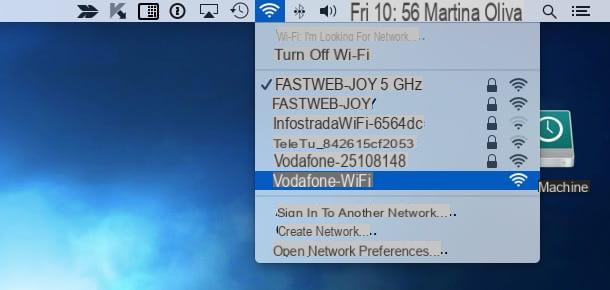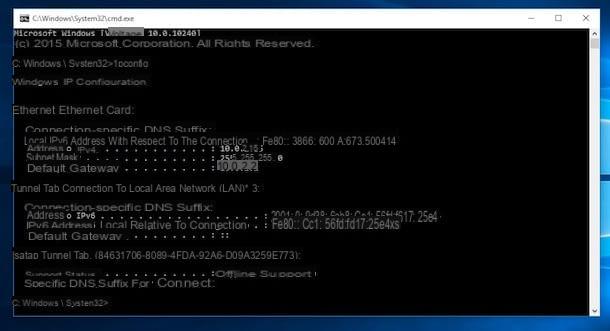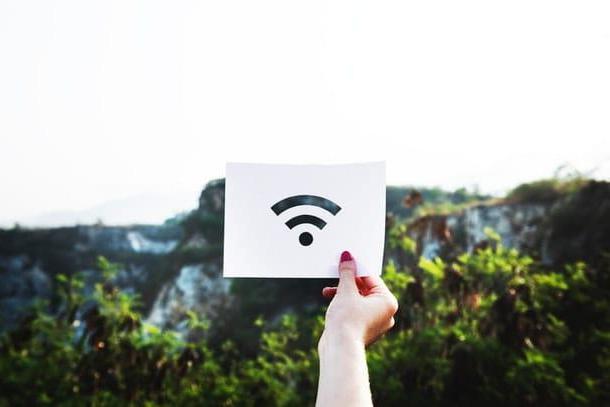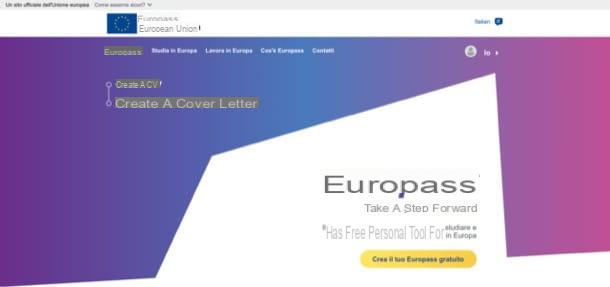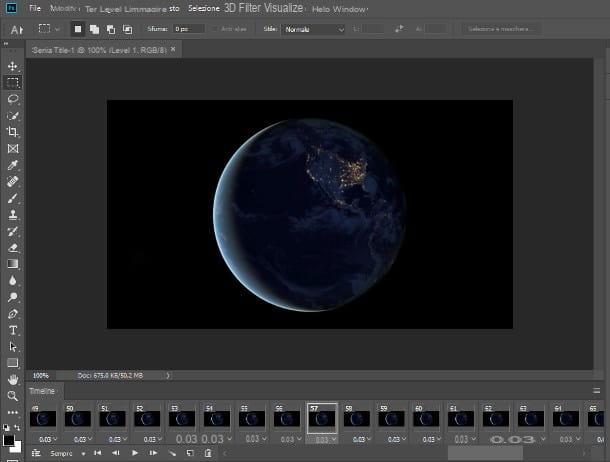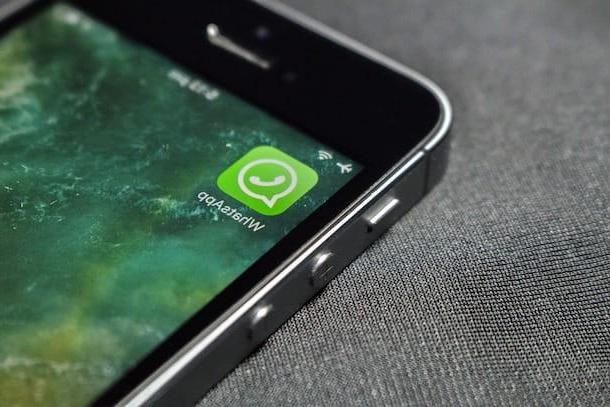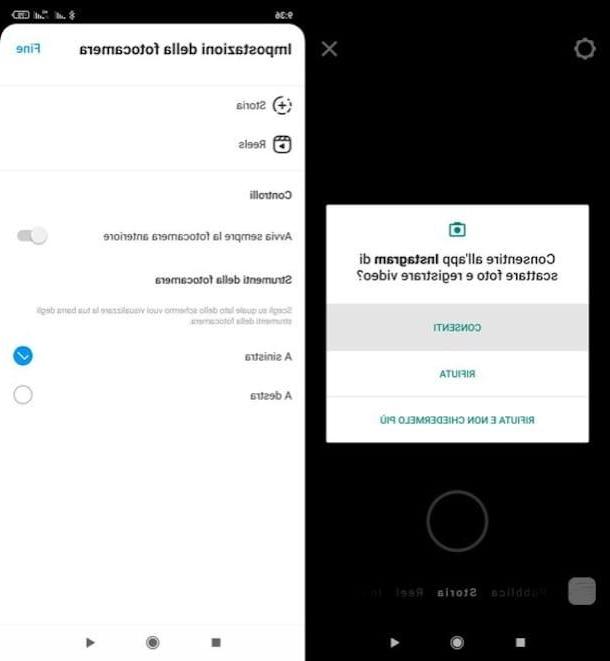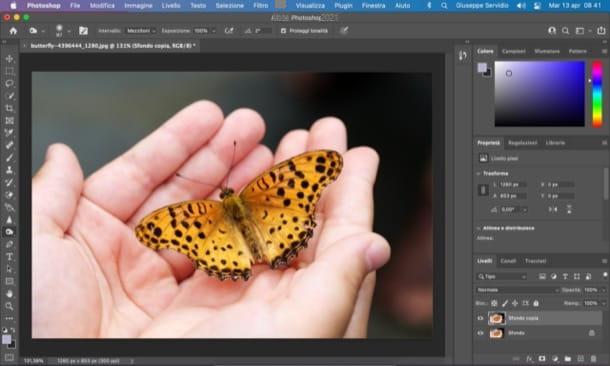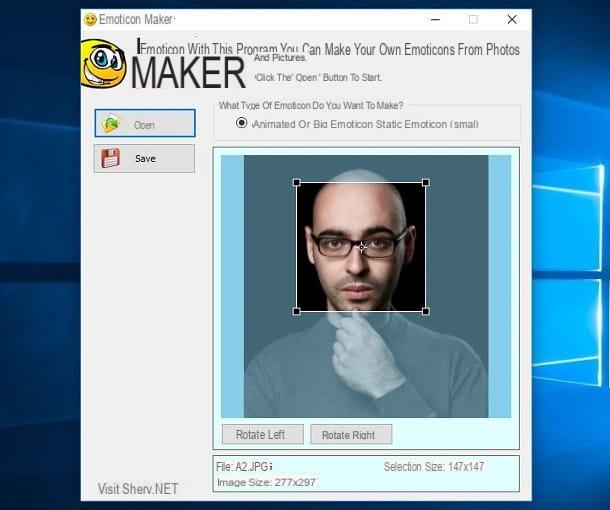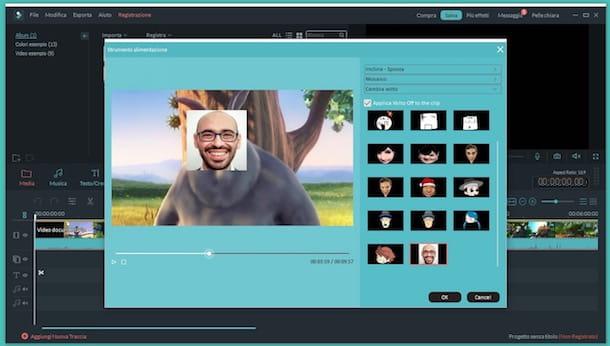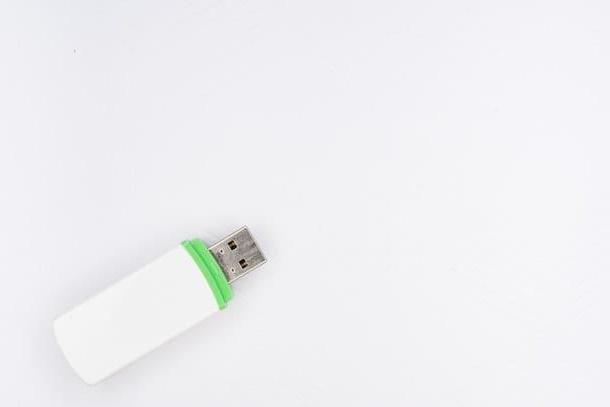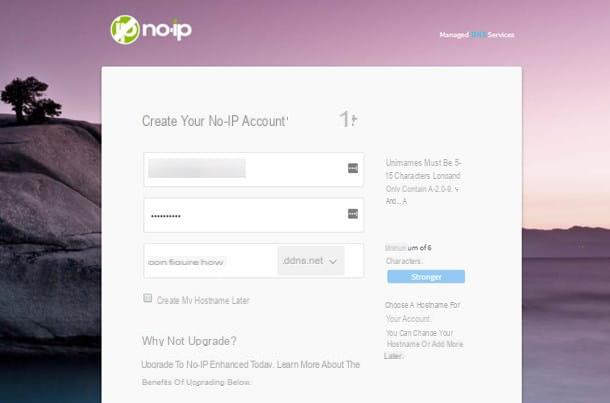How to create bootable USB stick: Windows
To begin with, let's find out how to create Windows bootable USB stick. Below, therefore, you will find indicated how to proceed with all the most popular editions of the Microsoft operating system.
How to create bootable USB stick: Windows 10
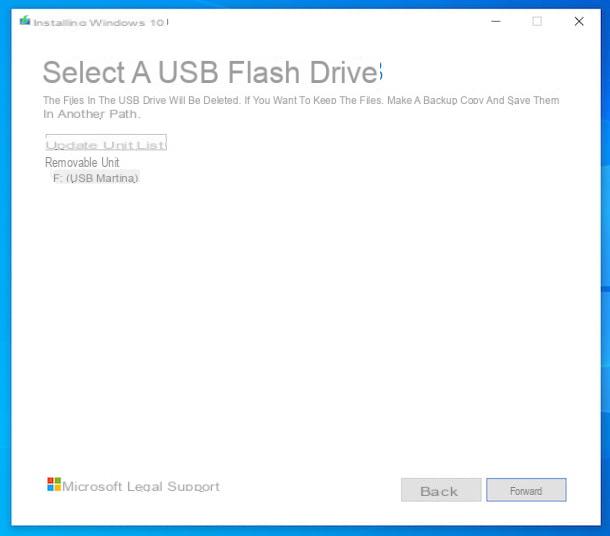
If you want create Windows 10 bootable USB stick, you can resort to using Microsoft's Media Creation Tool: it is a free program from Microsoft itself that allows you to download Windows 10 from the Internet and then create DVDs or USB sticks to install the operating system.
To download Media Creation Tool, connect to the Microsoft website and click on the button Download the tool now. Keep in mind that to download the tool it is necessary to connect to the Microsoft site with a Windows computer, as using other operating systems the download of the Windows 10 ISO file is proposed.
Once the download is complete, connect to a free USB port computer one empty pendrive (or on which files that you have already archived elsewhere are saved) with a capacity of at least 8GB (if you don't have it, you can buy it), then start the Media Creation Tool .exe file.
In the window that you see appear on the desktop at this point, click on the button Yes and wait for the preliminary operations to create bootable USB stick with Media Creation Tool are completed. Then click on the button Accept, select the option Create installation media (USB flash drive, DVD or ISO file) for another PC and click your bottone NEXT.
Then make sure that language, edition e architecture Windows 10 are compliant with what you want to download. If not, remove the check mark from the box next to the option Use the recommended options for this PC and use the drop-down menus at the top to select the options of your interest.
Now, click on the button NEXT, scegli l'opzione USB flash drive, click on the button again NEXT and indicates the name (or the drive letter) of the pendrive. To conclude, click on the button again NEXT and wait for Windows 10 to be downloaded from the Internet and copied to the stick.
After creating your pendrive with Windows 10, you can use it on any computer to perform theinstallation of the operating system, proceeding as I explained in my guide on how to install Windows 10.
Of course, you'll also need to activate your copy of Windows with a product key. If you don't have one yet, I suggest you get it by contacting Mr Key Shop: a site managed by a company with offices in the city and England that buys and resells 100% original licenses for Windows, Office and antivirus unused by companies and companies (in full compliance with European regulations on the subject). On the site, in fact, there are licenses at very advantageous prices for Windows 10 Home, Windows 10 Pro and Windows 10 upgrade licenses. In addition, the licenses are delivered within a few minutes by e-mail and there is a satisfaction guarantee or refunded.
How to create bootable USB stick: Windows 8
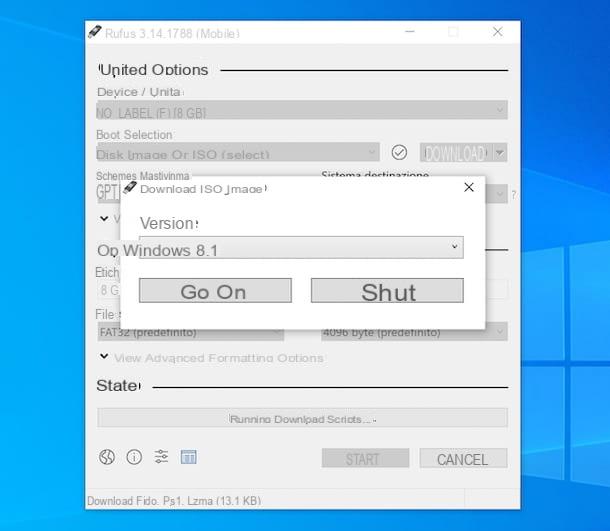
If, on the other hand, your need is to create Windows 8 bootable USB stick, you can contact Rufus. It is a small free application thanks to which you can create a bootable USB stick of any version of Windows (it also allows you to directly download the ISO file of Windows 10 and Windows 8.1), as well as the main distributions of Linux (if you want to know more, read my guide on how to install Ubuntu from USB). It is quite simple to use and guarantees complete control over the properties of the pendrive to be created.
To download Rufus on your computer, go to the program's website and select the link Rufus x.xx Portable placed at the section Download.
Once the download is complete, connect to a free USB port computer one empty pendrive (or on which files you have already stored elsewhere are saved) with a capacity of at least 8GB, start the Rufus .exe file and click sul pulsating Yes in the window that appears on the screen.
Then proceed to set all preferences relating to the type of key you want to create. So, select your USB stick from the drop-down menu Device / unit, then choose the option Disc or ISO image from the drop-down menu next to the item Boot selection, click here arrow next to the menu on the right, select the option from it Download and press on the relative button.
In the further window that opens, select Windows 8.1 give menu to tendin Version and click sul bottone Continue. Then specify the release,edition language and l 'architecture of the operating system you want to download, using the appropriate menus and clicking on the button from time to time Continue. Finally, click on the button Download.
Once you have done all the above steps, the Rufus parameters should change automatically to suit Windows 8. To avoid problems, however, I suggest you check that the items are selected MBR in the section Partition scheme e NTFS in the section File System (if not, take care of yourself). To conclude, click on the button starts and wait for the procedure to create a bootable USB stick with Rufus is completed.
Later, you can use the pendrive created to install Windows 8 on any computer, following the procedure ofinstallation that I indicated in my specific guide on how to install Windows 8. Remember, however, that to activate the operating system you must have a product key valid. If you don't have one yet, you can buy it on the aforementioned Mr Key Shop, where you can find licenses for Windows 8 at very attractive prices.
How to create bootable USB stick: Windows 7
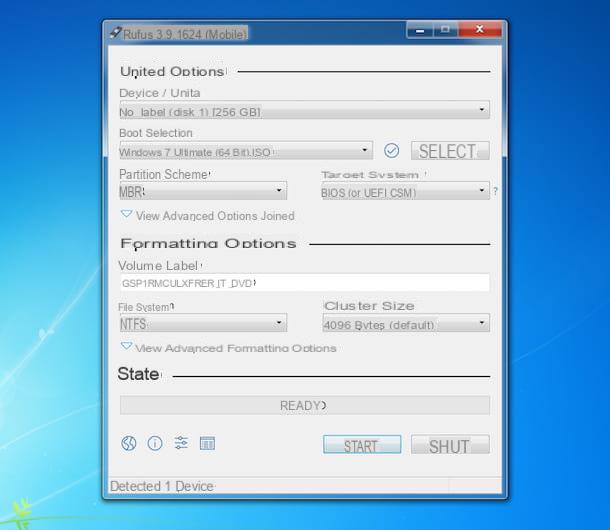
You can take advantage of Rufus also for create Windows 7 bootable USB stick. In this case, however, you have to worry about recovering the ISO file operating system (if you don't already have it).
To do this, go to this page of the Microsoft site, type the activation code of your copy of Windows 7 in the field under the heading Enter the product key and click sul bottone Verifica to proceed with the download. If you don't have the product key of the operating system, you can buy one on the aforementioned Mr Key Shop, on which there are Windows 7 product keys at very attractive prices.
After recovering the Windows 7 image file, connect to a free USB port from the PC one empty pendrive (or anyway with files that you have already archived elsewhere) for at least 4GB and download, start and configure Rufus as I have already explained to you in the previous step.
In this case, however, after selecting the item Disc or ISO image from the drop-down menu next to the item Boot selection in the Rufus window, click the arrow next to the menu on the right, choose the option from the latter Select, click on the relative button and select the Windows 7 ISO file. Then proceed with the creation of the bootable pendrive similar to how I have already explained to you and that's it.
After completing the procedure for creating the pendrive with Windows 7, you can perform theinstallation of the operating system on any computer, as I indicated in my specific guide on how to install Windows 7.
How to create bootable USB stick: Mac
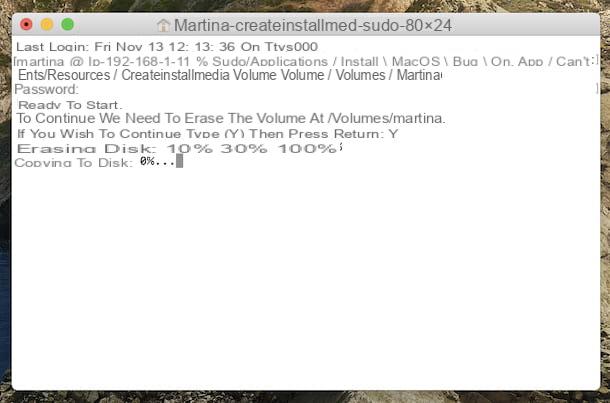
If you need to create Mac bootable USB stick, I am happy to inform you that not only is this feasible, but that it is also a very simple procedure. To do this, you don't have to use third-party tools, but you can do everything from the command line, via the terminal.
So, first of all download themacOS installer, proceeding as I explained to you in my guide on how to install macOS Big Sur, then connect to one free USB port Mac one empty pendrive (or in any case with files that you have already stored elsewhere) with a capacity of at least 12GB and start the Terminal, selecting the relevant one icon (Quella with the nether finest in the riga di codice) found in the folder Other of Launchpad.
In the window that appears, enter the command diskutil list followed by pressing the key Submit on the keyboard, in order to view the list of all the units connected to the computer: then take note of the identifier of your USB key, the one you find shown in the column Identifier.
Next, issue the command sudo / Applications / Install macOS nomeOS.app/Contents/Resources/createinstallmedia --volume / Volumes / pendrive (replace at the end pendrive the identifier of the USB key in your possession and to that nOME the name of the version of the operating system you are interested in), enter the administration password on the computer, confirm the execution of the operation by pressing the key Y on the keyboard and grant the terminal i permits needed to access the external volume.
After completing the above steps, the USB stick will be initialized and macOS files will be copied to it. At the end of the procedure, a message will appear on the screen indicating the thing and you can use the USB key to reinstall macOS on the current computer or on another Mac, doing as I explained to you in my guide on the subject.
Still acting from the macOS Terminal, I inform you that you can also create a bootable USB stick of Windows 10 (as well as other versions of the Microsoft OS). To do this, first find the ISO file of the operating system, proceeding as I explained in my guide on how to download ISO Windows 10.
At this point, take note of theidentifier of the pendrive proceeding as I explained above, then format the key by issuing the command diskutil eraseDisk MS-DOS "SISTEMAOPERATIVO" MBR / dev / pendrive (taking care to replace at the end the pendrive the indicator of your USB stick and to the OPERATING SYSTEM the Windows version name) followed by pressing the key Submit on the keyboard.
Afterwards, type the command hdiutil mount ~ / Folder / file.iso (taking care to replace when finished Folder the location where the ISO file of your interest is and at the end file.iso the name of the ISO file) to mount the ISO file, then use the command rsync -vha –exclude = sources / install.wim / Volumes / ISOIMAGENAME / * / Volumes / OPERATING SYSTEM (replacing the ISO IMAGENAME name with the ISO image name at the end OPERATING SYSTEM the name of the Windows version) to mount the pendrive.
Finally, use the command wimlib-imagex split /Volumes/ISOIMAGENAME/sources/install.wim /Volumes/SISTEMAOPERATIVO/sources/install.swm 3000 (replacing at the end IMAGENAMEISO the name of the ISO image and that OPERATING SYSTEM the name of the Windows version) to divide and copy the install.wim file on the USB key and use the diskutil unmountDisk / dev / pendrive command (taking care to replace at the end pendrive the indicator of your USB stick) to unmount the USB drive.
I also point out that if you want to create a bootable Windows USB stick from Mac, to use the Microsoft home operating system in dual-boot with macOS, you can use Boot Camp Assistant. This is an application included "standard" in all computers of the "bitten apple" that allows you to create a pendrive with the installation files and drivers necessary for the operation of Windows on Mac. However, keep in mind that you cannot install Windows on Mac if yours is a Mac equipped with an Apple Silicon chip (eg M1), but you can only do this if you have a Mac with an Intel processor. For more details, check out my guide on how to install Windows on Mac.
How to create bootable USB stick for Mac from Windows
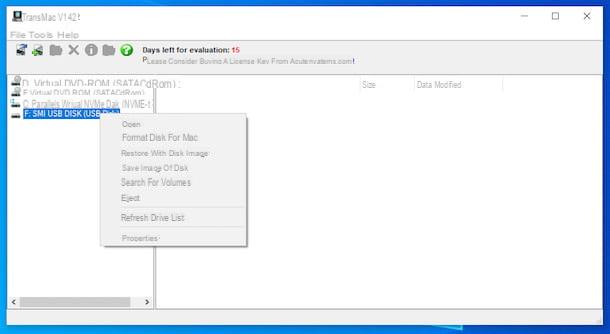
Acting from Windows it is not only possible to create a bootable USB stick with the Microsoft operating system, but also with macOS. If you have this need, rely on the use of TransMac. It is, in fact, a software that, after having found themacOS installer, proceeding as explained in the previous step, allows you to create bootable USB stick for Mac from Windows, in a very simple and fast way. Unfortunately it is paid (it costs 59 dollars), but you can try it for free for 15 days.
To download the program to your computer, go to its website and click the link TransMac Download: tmsetup.zip which is located at the top.
Once the download is complete, extract theZIP archive obtained in a position of your choice, start the TransMac .exe file hold the internal area and click on the button Yes in the window that appears on the screen. Then, click on the button Next, select the voice I accept the agreement and click on the button again Next (for four consecutive times), then on that install and finally, press the button Finish.
In the new window that appears, click on the button Run to start the TransMac free trial, then plug one into a free USB port on your computer empty pendrive (or with files that you have already stored in another location) with at least 12GB free, right click on it in the list on the left, select the option Format Disk for Mac from the menu that appears and click on the button Yes.
Next, it indicates the name that you want to assign to the pendrive after formatting and press the buttons OK, Yes and again OK. If in doing so a warning appears stating that you must use the software with administration rights, sui pulsnti award Yes e Yes to agree to this and restart TransMac.
When formatting is complete, right click the USB stick again in the list on the left and choose the option Restore with Disk Image from the context menu. Then click on the button Yes to confirm your intentions, indicate the folder where is the file with the macOS installer (the file to select is the one named InstallESD located in the subfolder Contents) and confirm that you want to overwrite the key.
How to create bootable USB stick: Ubuntu
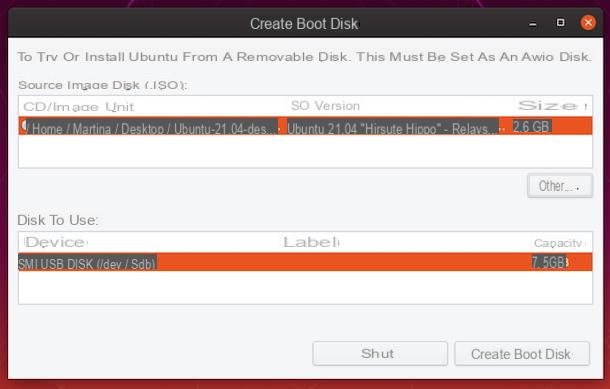
Finally, if that's your intention create Ubuntu bootable USB stick, which is one of the most popular Linux distros, know that you can do it without having to resort to the use of third-party tools. Just do it all through Boot disk creator, the “standard” utility specifically designed for this purpose.
Before you can use it, however, you need to find the ISO file of the operating system (if of course you don't already have it). To download that of Ubuntu you can follow the instructions contained in my tutorial on the subject, while for what concerns Windows you can follow the instructions I have already given you in the initial part of the guide.
After completing the preliminary steps above, connect to one free USB port computer one empty pendrive (or on which files that you have already archived elsewhere are saved) having a capacity of at least 8GB, dopodiché clicca sul pulsating Show applicazioni you find on the sidebar Ubuntu and select the tool icon Create startup disk (Quella with the USB pendrive) in the screen that appears.
In the window that is now shown on the screen, click on the button Other and select the ISO file of the operating system that you intend to copy on the USB stick, then select the name of your drive from the list in the section Disc to use and start the procedure for creating the bootable pendrive by clicking on the button Create startup disk.
How to create bootable USB stick
